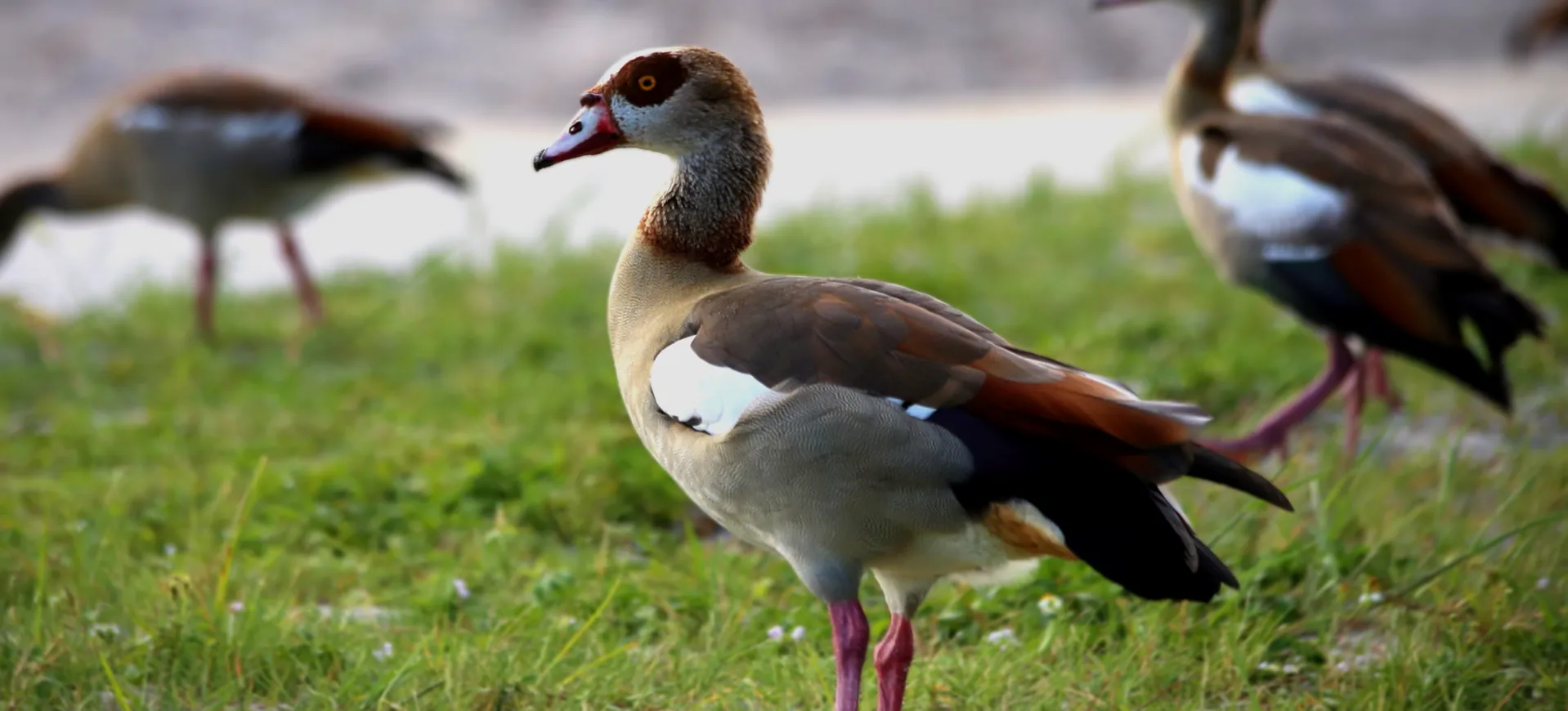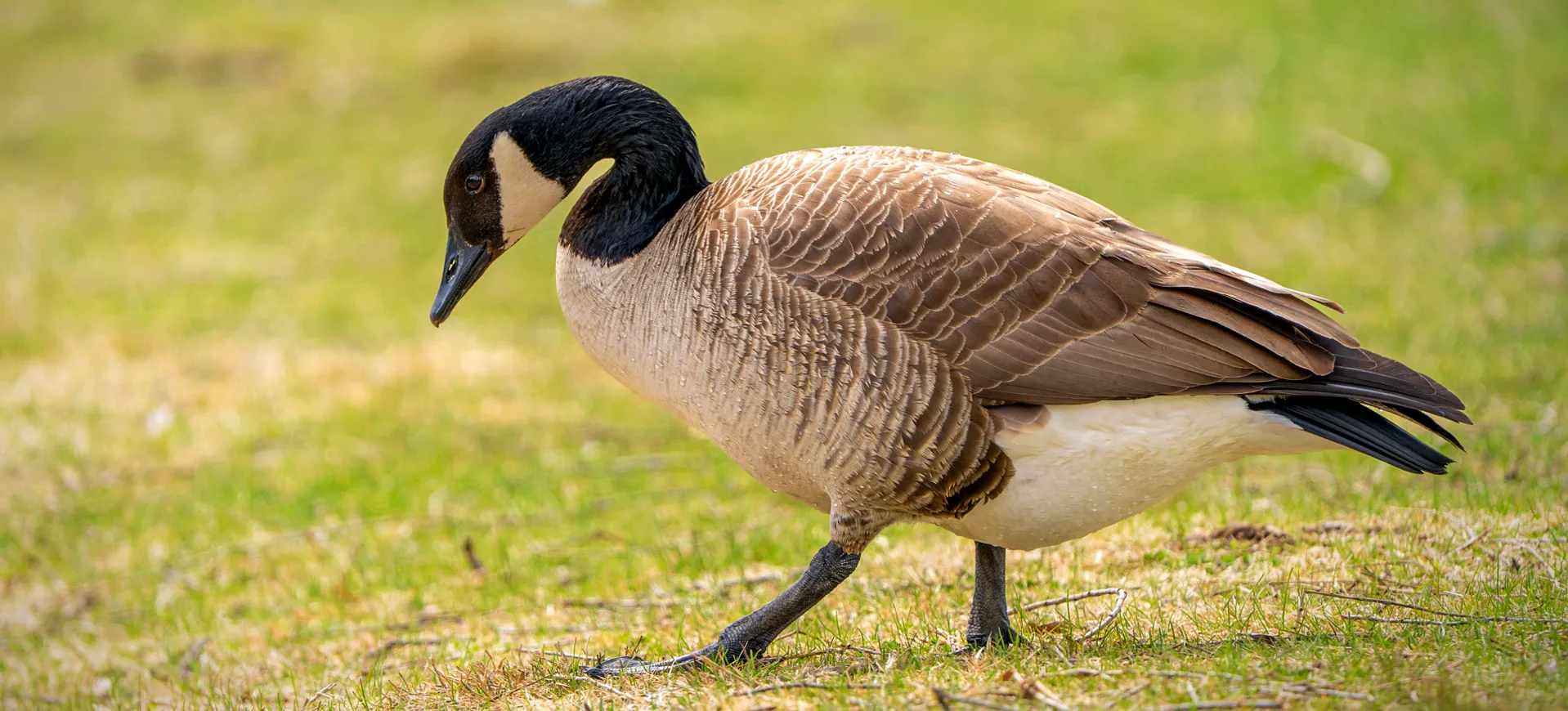Overview
The African Comb Duck, also known as the Knob-Billed Duck, is a unique species of waterfowl with distinct physical characteristics that set it apart from its relatives. They belong to the duck, goose, and swan family Anatidae, which resides in tropical wetlands in sub-Saharan Africa, Madagascar, and South Asia. This species is known for its extraordinary features, such as the large black knob at the base of the male’s bill and the white-striped wings noticeable in both sexes during flight.
Despite their large size, African Comb Ducks are excellent fliers and swimmers. They prefer quiet freshwater environments, ranging from secluded swamps and shallow lakes to riverine marshes. The males are prominently larger than females and have a more pronounced comb on their beaks, which is the inspiration for their name. This unique waterfowl species has adapted to various habitats and is often found in regions where permanent water bodies exist.
Their unique, knob-like feature and the comb’s larger size in males signify sexual dimorphism in this species. Male Comb Ducks use this feature for competitive displays during the breeding season. They are polygamous, with males often having several females during the breeding season. They are mostly silent, but when they make sounds, males produce a low whistle, and females emit a soft growl.
Taxonomy
Kingdom
Phylum
Class
Order
Family
Genus
Species
Type
Current distribution:
The African Comb Duck is widespread in the wild across sub-Saharan Africa and South Asia. In Africa, they are present from Senegal and Gambia in the west to Ethiopia and Kenya in the east and as far south as South Africa. They are also found in Madagascar. In South Asia, they are prevalent in India, Nepal, Bangladesh, and Sri Lanka. There are also smaller populations in Southeast Asia.
The distribution of this species is somewhat fragmented due to their preference for specific habitats and mobility. Their range expands considerably during the rainy season when temporary bodies of water are available and contracts during the dry season when they concentrate around permanent waters. While their numbers may fluctuate locally, the African Comb Duck remains widespread throughout its extensive range.
Physical Description:
The African Comb Duck is a large and robust species with a noticeably heavy body and large, broad wings. Their plumage is predominantly dark with a glossy greenish-black upper part. The underside and the wings have white streaks. The wings are white-lined, a characteristic visible when the bird is in flight. Their eyes are brown, and their legs and feet are dark grey. The most distinctive feature is the large black comb or knob at the base of the bill in males, which grows more extensively during the breeding season.
Adult males are more significant than females and have a more prominent black knob on the bill. Their plumage is glossy, with dark green, black, and white feathers. Females and juveniles, conversely, are primarily brownish-grey, with less conspicuous glossy plumage and a more minor or non-existent knob on their beak. Their bills are generally black in males and slate-grey in females. The Comb Duck is a visual spectacle, and its unique features make it easily identifiable in its native habitats.

Lifespan: Wild: ~15 Years || Captivity: ~20 Years

Weight: Male: 3.3–4.4 lbs (1.5–2 kg) || Female: 2.2–3.3 lbs (1–1.5 kg)

Length: Male: 25–27 in (63–69 cm) || Female: 22–24 in (55–60 cm)

Height: Male: 22–25 in (56–64 cm) || Female: 20–22 in (50–56 cm)

Wingspan: Male & Female: 51 in (130 cm)

Top Speed: 35 mph (56 km/h)
Characteristic:
Native Habitat:
The African Comb Duck is native to tropical wetlands in sub-Saharan Africa, Madagascar, and South Asia. This species thrives in freshwater habitats, including marshes, swamps, lakes, and rivers, particularly those with dense aquatic vegetation which provides food and cover. They prefer quiet and secluded water bodies with plenty of surrounding vegetation.
During the breeding season, Comb Ducks are often found on temporary waters and floodplains; in the dry season, they move to permanent bodies of water. They are adaptable birds and can inhabit lowland and high-altitude regions as long as sufficient water and food are available. This adaptability allows them to inhabit a wide variety of environments.
Biomes:
WWF Biomes:
Biogeographical Realms:
Countries:
Diet:
Diet & Feeding Habits:
The diet of the African Comb Duck is diverse and omnivorous, consuming a range of food from plant material to small aquatic animals. Their diet consists mainly of seeds, aquatic plants, grasses, grains, and sedges, which they usually forage at night. They also consume insects, snails, and other small invertebrates, especially during the breeding season, to meet their increased protein requirements.
In terms of feeding habits, Comb Ducks are both grazers and dabblers. They often feed on land near water bodies, where they consume a variety of vegetation, but they also dabble in shallow water to eat aquatic plants and small animals. This dual-feeding habit allows them to adapt to varying food availability and habitats. It’s also noteworthy that during the dry season, when food resources are scarce, these ducks can fly long distances to find more food, demonstrating their excellent adaptation skills.
Mating Behavior:
Mating Description:
African Comb Ducks have a polygamous breeding system, with males often maintaining a harem of several females during the breeding season. The breeding season typically corresponds with the start of the rainy season, although the exact timing can vary depending on the region. Males engage in aggressive and elaborate displays to attract females, which include displaying their large knobs and inflated necks and making low whistling calls.
Females lay a clutch of 7 to 15 creamy white eggs in a nest, usually situated on the ground among tall grass or reeds near a water body, but sometimes in a tree hole. The female alone incubates the eggs for about 28-30 days. Once hatched, the ducklings are precocial and can leave the nest soon after drying their feathers, although they remain under the mother’s care for several weeks until they can fly.
Reproduction Season:
Birth Type:
Pregnancy Duration:
Female Name:
Male Name:
Baby Name:
Social Structure Description:
The African Comb Duck is a social species often found in pairs or small groups during the breeding season and in larger flocks outside the breeding season. Males are polygamous, often having several females during the breeding season.
The social structure of this species revolves around the dominant male, with females and offspring making up the rest of the group. Their social interactions involve a lot of vocal and visual signals, particularly during the mating season. Outside the breeding season, Comb Ducks are friendly and often roost communally, which may help detect predators and find food resources.
Groups:
Conservation Status:
Population Trend:
The African Comb Duck is widespread and generally common across its range, although exact population figures are unavailable. They are often found in sizable flocks in Africa, especially outside the breeding season. In South Asia, they are considered locally common but are less abundant than in Africa.
Despite being widespread, the African Comb Duck population is believed to be declining due to habitat degradation, hunting, and disturbances. However, the rate of decline is not believed to be rapid enough to warrant a threat category. Notably, the species is less common in regions where it is heavily hunted, indicating that hunting pressure could significantly impact local populations.
Population Threats:
The African Comb Duck faces several threats, primarily habitat degradation and hunting. Their preferred habitats, such as wetlands and marshes, are susceptible to pollution, drainage for agriculture, and other forms of human encroachment. These activities lead to a decrease in suitable habitats for these birds.
Hunting is another significant threat, especially in areas where the species is considered a game bird. Hunting not only leads to direct mortality but can also disrupt breeding activities. Climate change, with its potential to alter water availability and food resources, can also pose future threats to the African Comb Duck.
Conservation Efforts:
The African Comb Duck is currently listed as “Least Concern” by the IUCN, indicating that it is not currently facing an immediate threat of extinction. However, general bird conservation measures indirectly benefit this species, such as the protection of wetlands and other habitats.
Organizations like Wetlands International work globally to conserve wetlands crucial for waterfowl survival, like the African Comb Duck. Efforts to regulate and enforce existing hunting laws also help protect this species. Educating the local communities about the ecological importance of this bird and encouraging sustainable practices could be effective in ensuring their long-term survival.
Additional Resources:
Fun Facts
- The African Comb Duck is one of the largest species of ducks in the world.
- Males have a large, fleshy knob on their bill, which gives this species its name.
- These ducks are excellent fliers, despite their heavy body and large size.
- Their diet is omnivorous, consuming a variety of plants and small animals.
- The African Comb Duck is polygamous, with males often maintaining several females.
- The species is widespread and can be found in sub-Saharan Africa, Madagascar, and South Asia.
- They have a distinctive call, with males producing a low whistle and females emitting a soft growl.
- The African Comb Duck is well adapted to both lowland and high-altitude environments.
- Despite the hunting pressure and habitat degradation, the African Comb Duck is listed as “Least Concern” by the IUCN.
- They are social birds and can often be seen in flocks, especially outside the breeding season.






















































































